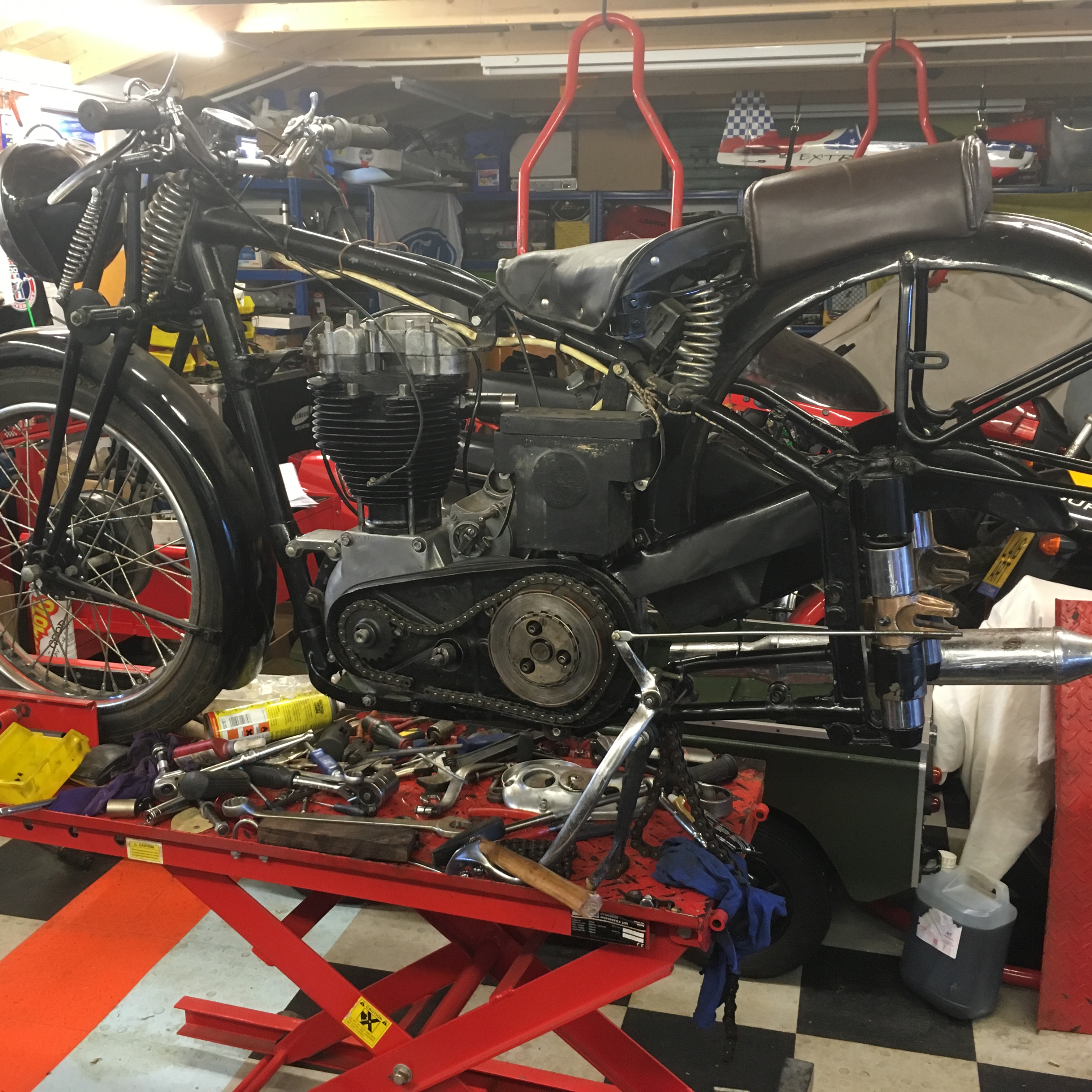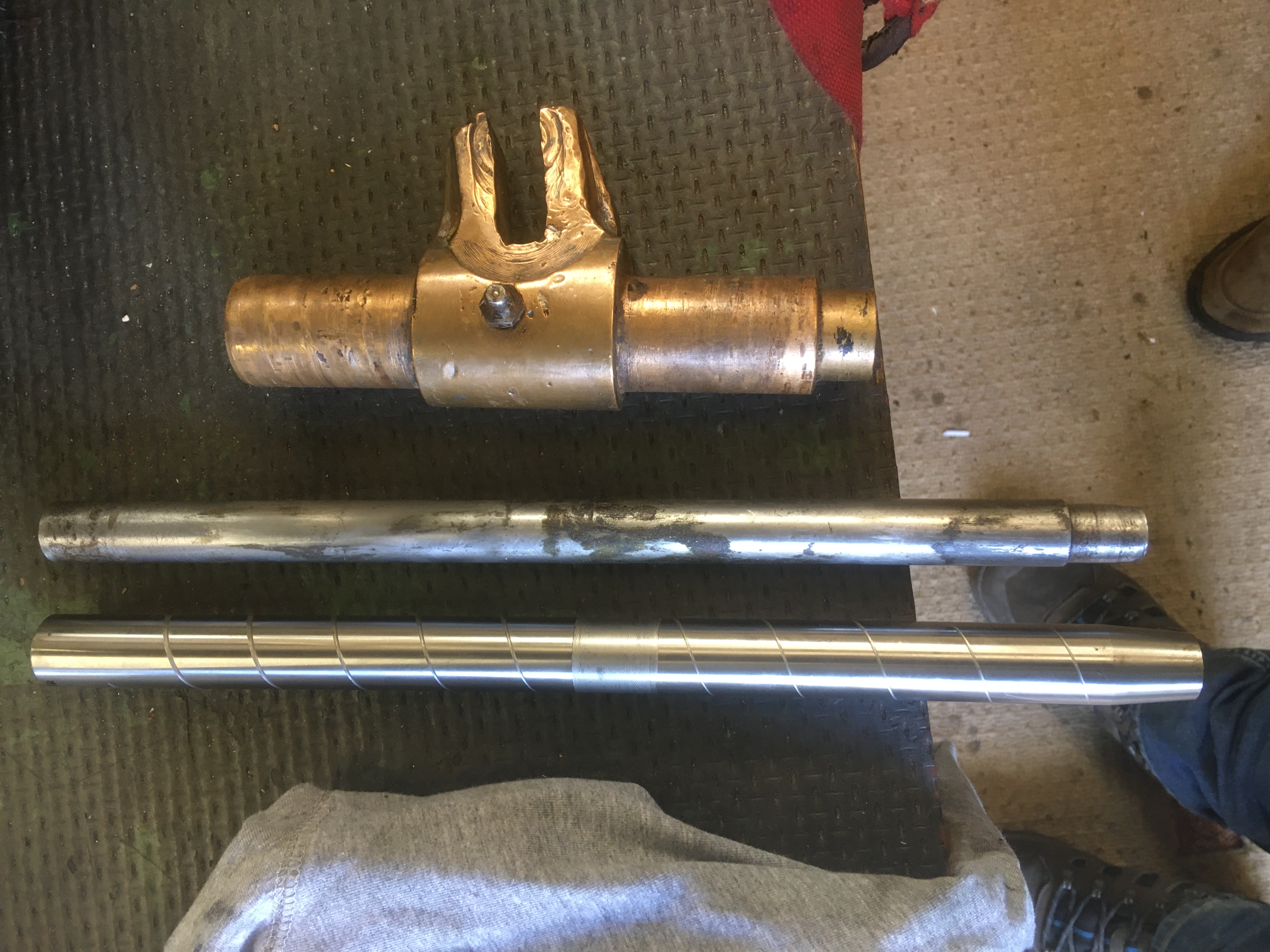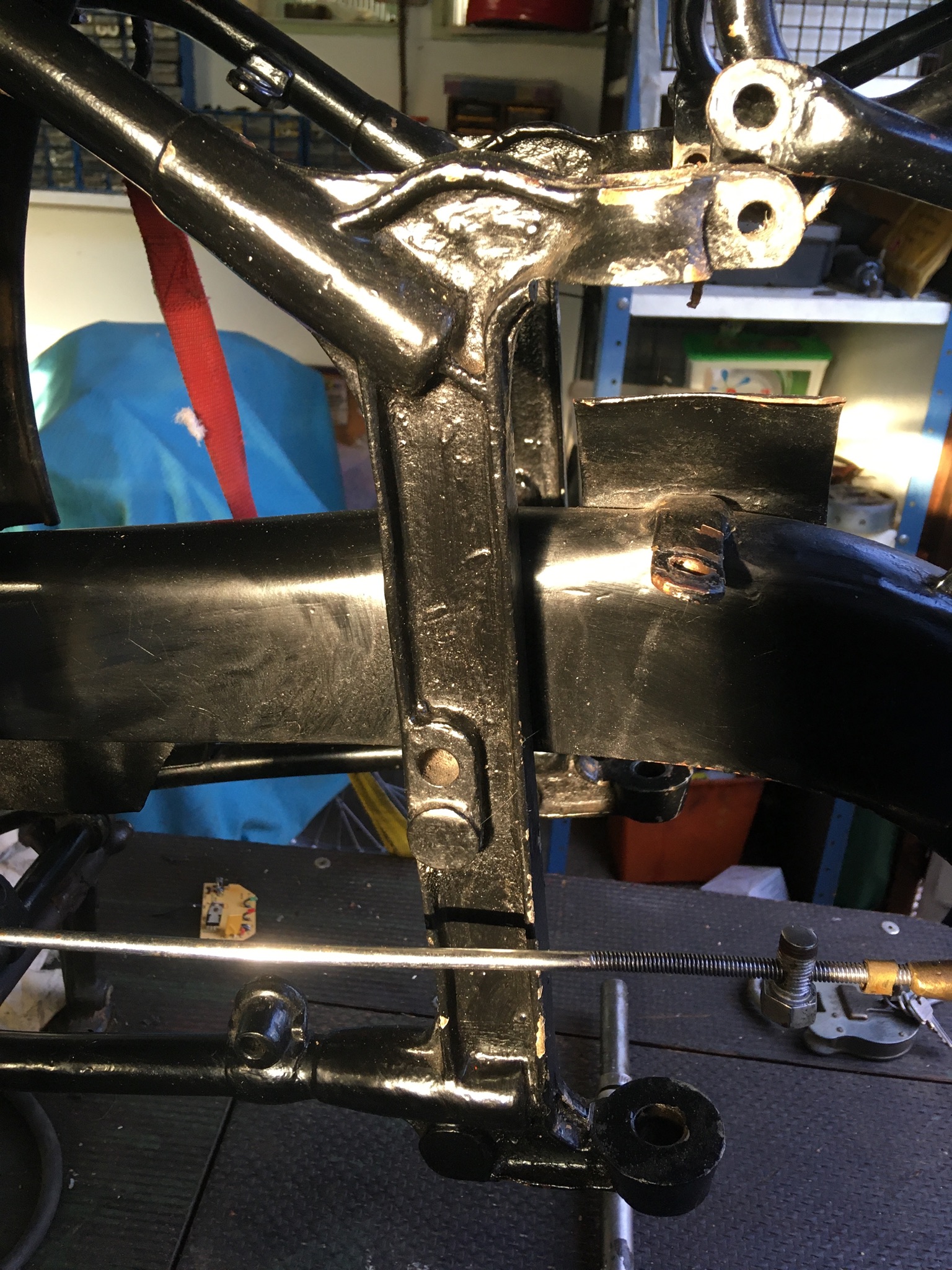I wonder if anyone knows around what weight a piston should be for my Norton model 18 1946 (Ex Argentina) The bike was in bits with 3 incorrect piston, I made one fit but it vibrated quite badly, since then I have bought a standard compression plus 40 one off RGM for what I now think is a 1948 on Year ES2 but the skirt needs filling away slightly to let it miss the flywheels? also has anyone locked the Rear suspension plungers and if so how? as it’s very worn and the spindles I got were wrong and I’m told the solid rear ends handled better anyhow?
many thanks for any help. Martyn
Thank you A piston weight…
Thank you
A piston weight is really my first concern Just too get it back together. The Argentina machines, or at least mine had most of the frame numbers wiped out as they seem to use there own chassis numbers, which look very much like the type of numbers used on a more modern machine, it’s been a pain but through deduction of all the other numbers it’s believed to be a 1946! I have found it a little sketchy quite what Norton were putting together and sending abroad right after the war, probably the old stock of parts they had left, I suppose it is what it is, what ever awful treatment must it have endured being ridden over there, anybody ever said?
I have watched the Motorcycle Diaries about Che Guevara with the big one, and apparently my machine was sold through Aga Cross which is where his machine was sold from!
Thanks again
- Log in to post comments
I'm not sure...
.. why you would want to lock the plungers? They can be tricky to dismantle if seized (I had a real odyssey with mine) but once sorted out I find both comfort and handling far better than with a rigid frame.
I had a new spindle made for mine by a helpful ex-toolmaker for about £20 or so. Unless the alloy sliders are fractured they should be retrievable by boring and fitting oversized spindles - or maybe even bushing.
- Log in to post comments
Well my sentiments entirely…
Well my sentiments entirely but
These are bronze type plungers that have already been sleeved, the spindles are different to the ones you can get from Norvil, and looked at it’s very worn out, maybe eventually I can make them work again but, an old friend from the day said, huh they handle well ridged, if you do lock them you might not be too popular......
- Log in to post comments
Locking them would be very…
Locking them would be very tough on the frame. And the plunger frames are allegedly not over strong to begin with. The rigid frames have a simple rear triangle.
- Log in to post comments
Plunger conversion ?
Hi Martyn,
By your description it sounds like your frame has had an after-market plunger conversion which were popular in the late 1940s and early '50s. If this is so you would need to have bespoke parts made to restore it to working condition. The other option would be to remove the rear end of the frame and get it re-tubed and fit the rigid frame lugs as original if you can find donor parts. The worst scenario would be to lock up the plungers as you will be carrying the extra 15 pounds of weight for no benefit and this would be less stable than a rigid frame. If you can post a photo of your bike someone might be able to identify it. As regards your piston, the pre 1948 flywheels were slightly larger diameter and thinner than the 1948 type, but piston weight complete with rings and pin should be around 1 lb for both. If you can lose an ounce off the piston it will be better at high revs.
- Log in to post comments
By the way thank Richard …
By the way thank Richard
Im getting the scales out now ha ha
- Log in to post comments
Looks original
To me that looks like an original Norton plunger setup. According to "Norton Singles" by Roy Bacon plunger suspension was available as an option on ES2 from 1939, becoming standard equipment from 1947 along with Roadholder forks instead of girders. My understanding, at least for UK models, is that Model 18 always had a rigid frame. Could it be that model specifications for export markets differed?
Ian McD
- Log in to post comments
Plunger conversion.
Hi Martyn,
Yes as suspected this is a post production fitment. The frame, forks and engine all look correct for a 1946 Model 18 rigid frame. The main plunger support lugs look to be modelled closely on Norton's own castings but have slight differences. This is also the case with the bronze sliders. The frame still retains some of the features used on the rigid version and has the original rear chain guard. To achieve this fitment the 4 rear frame tubes have had to be bent and re-aligned.
If I was in your position I would try and restore the plungers, perhaps by getting new vertical spindles made and sleeve the slider units. If you do this make sure you have the correct plunger rear wheel with the one piece spindle. You could fix the plungers rigid by putting substantial aluminium tubes in place of the springs to the exact length but you would have still have the wear issue side-ways.
BTW, I might have over estimated the extra weight, it's probably only 14 lbs 15 oz.
- Log in to post comments
Blimey the Jam thickens, not…
Blimey the Jam thickens, not Jam pot (got one of them)
Thank you for your kind comments and help.
It is a strange one, could it have been a special for Argentina or would they have retro fitted it over there, looks possible as I would imagine (but don’t know) that there roads in the forties would have been pretty rough, to be honest I’m enjoying the “Ride” so to speak, and being a Norton owner with its great monthly publication
Cheers Martyn
- Log in to post comments
The sliders...
.. look very like Norton ones apart from the colour. Are you sure they're not just painted? It's hard to imagine a small manufacturer going to that level of detail.
BTW your primary chain could do with adjustment!
- Log in to post comments
Hello Ian I have had the…
Hello Ian
I have had the plungers apart and they feel Weigh and look bronze inside and out to me, I am also perplexed as to the professionalisms of the conversion and the design!
I did originally want a ridged so maybe I should look for another frame for now, has anyone got a spare ?
Martyn
- Log in to post comments
Origin
The plunger assembly looks very like the very first BSA 500 plunger set-up in 1946. It had a unit engine, of which I have a few parts somewhere. Yours has a very large Battery, is it electric powered as it has no petrol tank visible. In which case it is a Green Norton, so setting a trend followed today.
- Log in to post comments
No apologies required.
Hi Ian McD,
This had me scratching my head for a while, so no worries. Just remember, it's a minefield out there !!
- Log in to post comments







Hi Martyn,
It may pay to check your frame number as 1946 Model 18's were fitted with a rigid rear end. Frame number for 1946 should start with A (for 1946) 3 (Model 18) then a 4 digit number.
An ES2, which had plungers fitted, has a model 4 designation. e.g C4 for a 1948 ES 2.